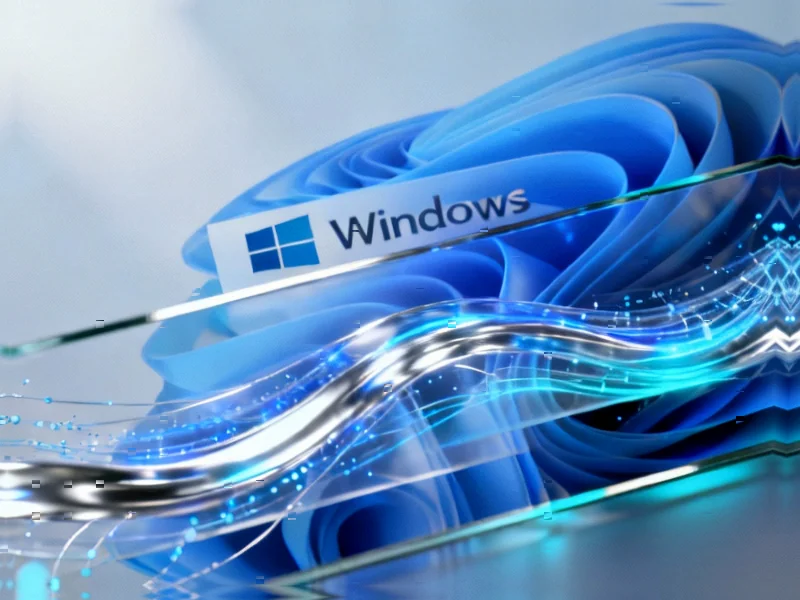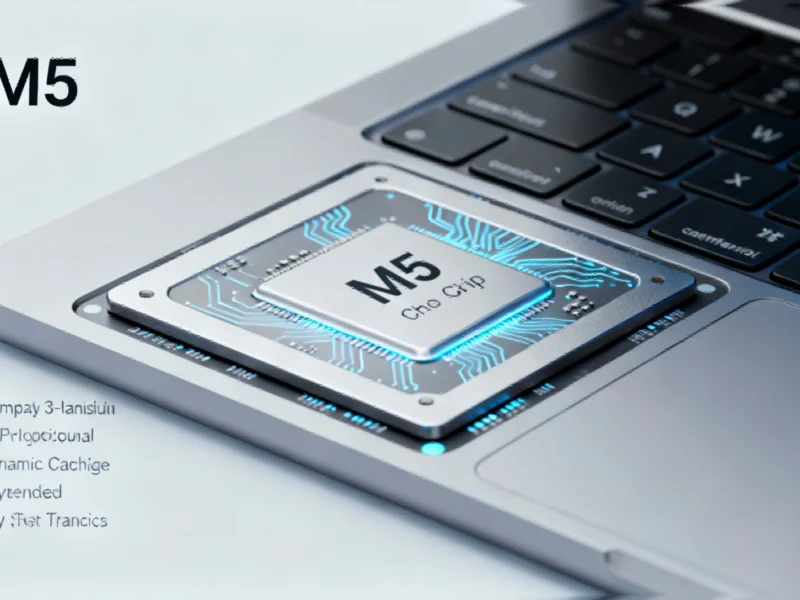Windows 11 Transforms into AI-Native Operating Platform
With Windows 10 reaching end-of-life status, Microsoft is aggressively advancing its vision for Windows 11 as an AI-native operating system, fundamentally changing how businesses interact with computing infrastructure. The company‘s strategic shift positions artificial intelligence not as an optional feature but as the core foundation of the Windows experience, signaling a significant transformation in enterprise computing paradigms.
Table of Contents
The Copilot Ecosystem: Beyond Traditional Computing
Microsoft’s commitment to AI integration extends across both hardware and software domains. Copilot+ PCs represent the hardware manifestation of this strategy, while the software component introduces what Microsoft describes as “breakthrough performance and native AI experiences.” Initially, these advanced capabilities will be exclusive to Copilot+ PC owners, creating a tiered ecosystem within the Windows environment., according to recent studies
Stefan Kinnestrand, Vice President at Microsoft, emphasized the strategic direction: “Windows leads the AI-native shift. Windows is evolving into an AI-native platform: secure, scalable, and built for agentic work.” This vision positions Windows 11 as a platform designed to “more effectively empower organizations to innovate, adapt, and thrive in a rapidly changing business landscape driven by AI.”, according to recent innovations
Enterprise-Grade AI Foundation
The integration aims to provide organizations with what Microsoft terms an “enterprise-grade foundation where AI powered capabilities operate safely and effectively.” This approach promises to deliver enhanced productivity and business agility through deeply embedded AI functionality. Rather than requiring specific hardware purchases, Microsoft plans to weave Copilot capabilities directly into existing Windows 11 systems, making AI assistance ubiquitous across the computing environment., according to industry experts
Multimodal AI Interaction Revolution
The forthcoming Copilot features introduce three distinct interaction modalities that redefine human-computer interaction:, according to technological advances
- Copilot Voice: Enables comprehensive voice command functionality for search operations, task automation, and creating what Microsoft describes as “more intuitive and hands-free” daily work experiences
- Copilot Vision: Provides real-time screen analysis with AI-driven instructions for application usage and task completion, operating under explicit opt-in permissions for privacy protection
- Copilot Action: Empowers AI agents to perform tasks on users’ behalf, including application launching, settings adjustments, and workflow initiation based on contextual understanding
The Invisible Technology Philosophy
Despite the extensive AI integration, Microsoft maintains that the objective is to make technology feel “invisible” rather than intrusive. Kinnestrand argues that this approach allows employees to “focus on what matters” while the AI handles operational complexities. The integrated ecosystem aims to reduce technological complexity while unlocking cross-platform intelligence and delivering seamless experiences across organizational teams and tools.
Streamlined Productivity Enhancements
Complementing the core AI features, Microsoft introduces ‘Click to Do’ functionality designed to accelerate workflow execution. This productivity tool enables instant actions such as meeting scheduling and task launching directly from the workspace environment, streamlining operations through single-click interfaces that reduce procedural overhead., as our earlier report
Industrial Computing Implications
For industrial computing environments, Microsoft’s AI-native approach presents both opportunities and considerations. The promise of enhanced productivity and automated workflows could significantly benefit manufacturing, logistics, and field service operations. However, enterprises must evaluate the implications for existing infrastructure, security protocols, and workforce training requirements.
The transition to AI-native computing represents a fundamental shift in how organizations will interact with technology infrastructure. As Microsoft pushes forward with this integrated AI vision, businesses across industrial sectors must prepare for a computing environment where artificial intelligence becomes an inherent partner in daily operations rather than a separate tool.
Related Articles You May Find Interesting
- OpenAI’s ChatGPT Atlas Browser Enters the Fray with AI-Powered Web Navigation
- Apple’s Legal Standoff with EU Could Reshape Digital Market Regulations
- Florida AG Alleges Roblox Is A Predator “Breeding Ground,” Opens Investigation
- Valkey 9.0 Achieves Billion Request Milestone While Python 3.14 Boosts Performan
- Major AWS Disruption Highlights Corporate America’s Cloud Dependency Crisis
References & Further Reading
This article draws from multiple authoritative sources. For more information, please consult:
- https://futureplc.com/terms-conditions/
- https://futureplc.com/privacy-policy/
- https://hawk.ly/m/aura-parental-control/i/techradar-onsite-bg-parentalcontrol
- https://hawk.ly/m/qustodio-premium/i/techradar-onsite-bg-parentalcontrol
- https://hawk.ly/m/net-nanny-family/i/techradar-onsite-bg-parentalcontrol
This article aggregates information from publicly available sources. All trademarks and copyrights belong to their respective owners.
Note: Featured image is for illustrative purposes only and does not represent any specific product, service, or entity mentioned in this article.



